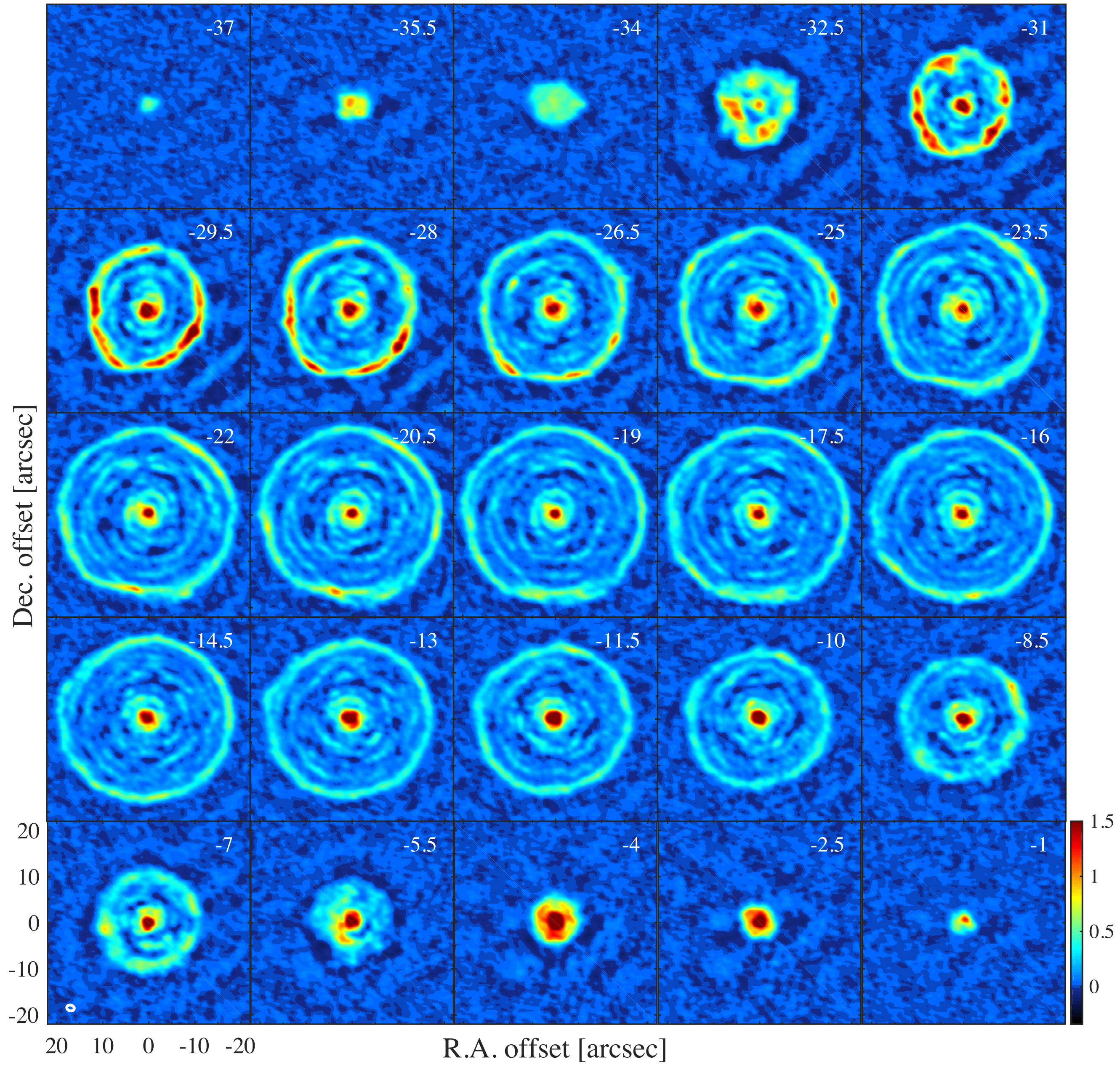The chemical and physical processes creating the giant star winds are relatively well understood. However, until relatively recently it has not been possible to study the wind evolution over time or the importance of inhomogeneities in the flow. The Atacama Large Millimeter/submillimeter Array (ALMA) is an array of radio telescopes build to study the cold Universe, e.g. clouds of molecular gas around AGB stars. ALMA can simultaneously map gas moving at different velocities and construct 3D images.
Since measurements from many telescopes are combined, ALMA can map the clouds with very high sensitivity and resolution and have already produced very detailed maps of the CSEs around some of the most nearby giants in early investigations (see Figure 1).

Deathstar is a project to map the winds around 52 nearby AGB stars in the southern hemisphere using ALMA. With ALMA the sizes of the CSEs can be directly measured for the first time which will eliminate a major source of uncertainty from wind property estimates. The maps will be used to calculate the best constrained giant star wind properties to date, covering a large range in the important physical and chemical parameters.
The project goals are:
- To provide a definitive gas mass-loss description to improve the accuracy of stellar evolution models - this is crucial for determining yields from AGB stars, for galaxy evolution, and for stellar population synthesis modelling.
- To uniquely determine the gas-to-dust ratios of the sources. Improved estimates of the gas-to-dust ratio will be crucial for interpreting future JWST AGB surveys.
- To produce a large data base for legacy science by including observations of several molecules and isotopologues such as 12CO, 13CO, SiO, CS, and SiS, etc.
Fig. 1 ALMA maps of the wind around the AGB star R Sculptoris (Maercker et al. 2016).


